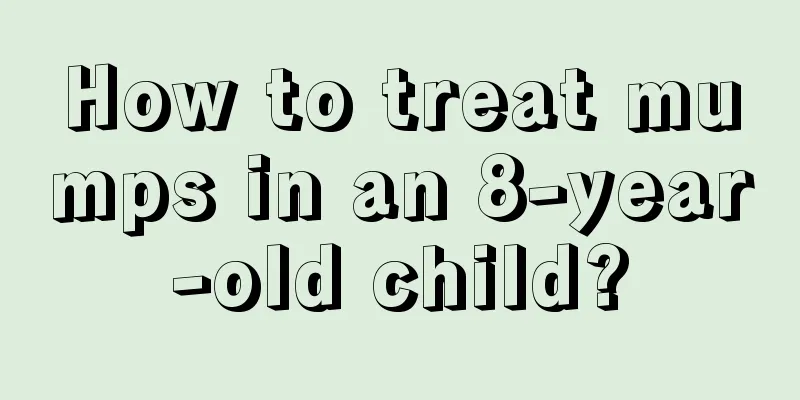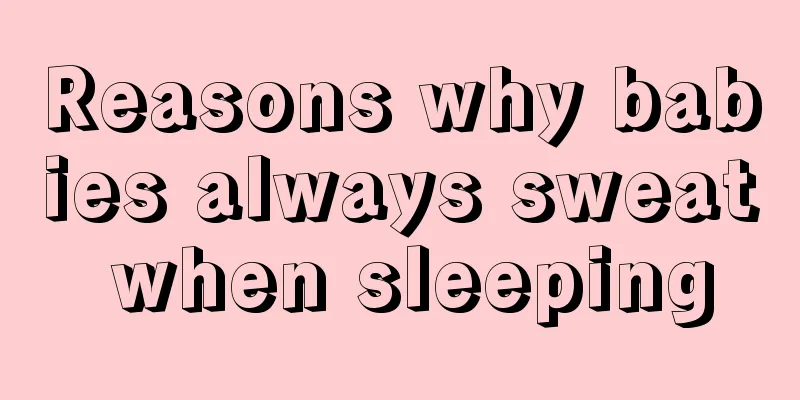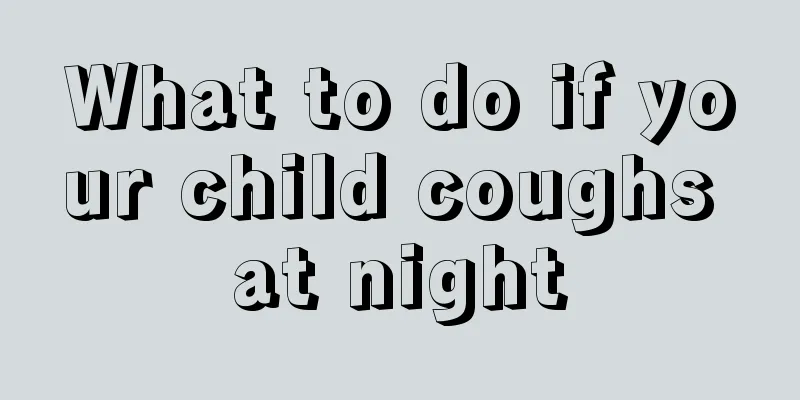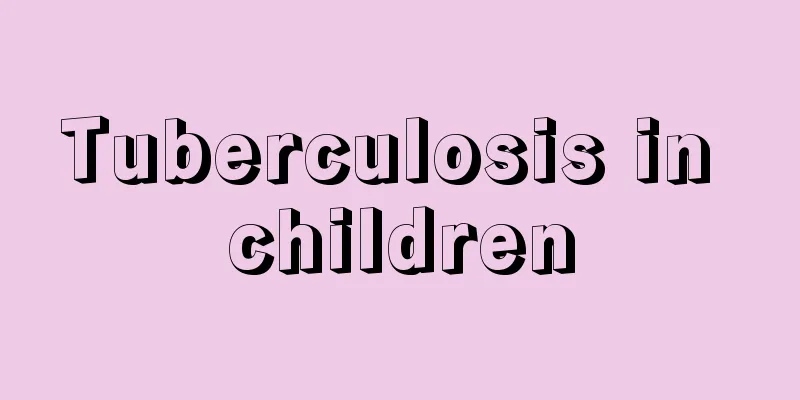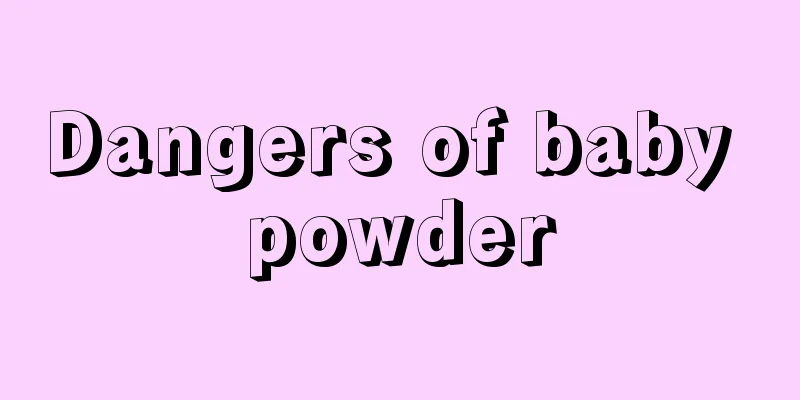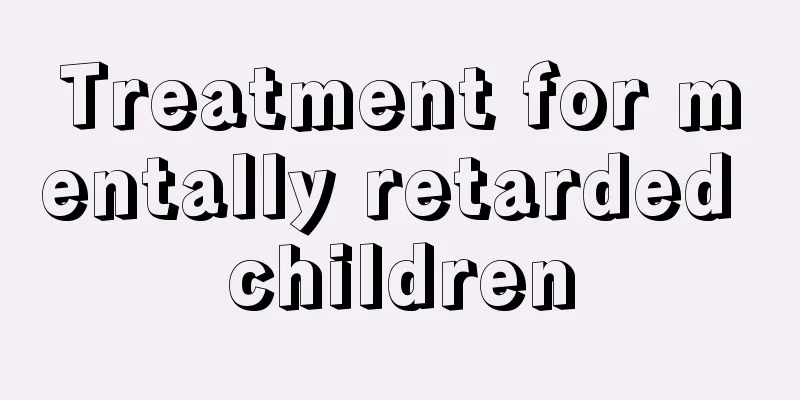Can I use a cold towel on my child's forehead when he has a fever?
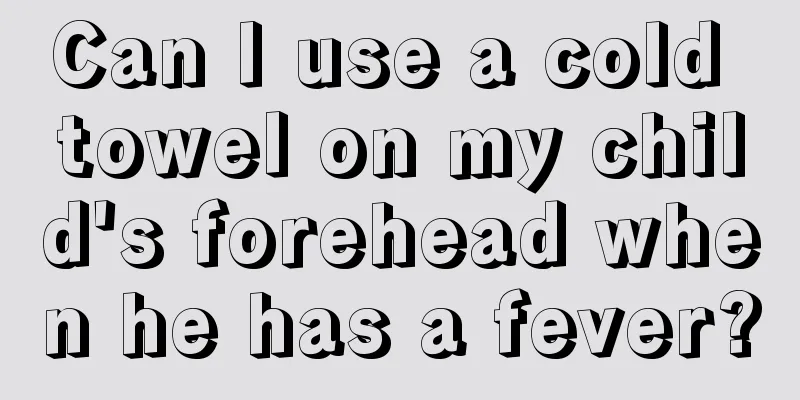
|
Children have weak resistance, and especially when seasons change, they will inevitably catch colds and fevers. Generally speaking, adults should always observe the child's body temperature after a fever. If the temperature is below 38 degrees, there is no need to rush to the hospital and you can take medicine at home. If the temperature exceeds 38 degrees, it should be a cause for alarm. When caring for a child with a fever, can you apply a cold towel to the forehead? Although it can be used, it will be ineffective if the temperature is too high. 1. Can a cold towel be applied to the forehead of a child with a fever? If you have a fever, if your body temperature exceeds 38.5 degrees, you need to take antipyretics (such as Motrin). If it does not exceed, you can use the following physical methods to reduce fever: 1. Apply a cold towel to your forehead. After the towel becomes warm, soak it in cold water and apply it again. Using a cold water bag or ice pack is more effective than applying a cold towel to the forehead. Use a slightly cool towel (about 25 degrees) to wipe your forehead and face. 2. Wipe the whole body with warm water or take a bath: Undress the baby, rub the whole body with a towel in warm water (about 37°C) or take a bath. This can dilate the blood vessels in the baby's skin and dissipate the body's energy. In addition, when water vapor evaporates from the body surface, it also absorbs body heat. Take a bath for about 10 to 15 minutes each time, about once every 4 to 6 hours. 3. Warm alcohol bath: For alcohol bath, mix 70% alcohol with 1/1 tap water, or 75% alcohol with 1/2 water, or you can mix white wine with 1/4 water, and put them in a small bowl. Keep doors and windows closed during sponge bath, dip gauze or a soft towel in the alcohol in the bowl, and wipe the child's palms, soles, armpits, inner sides of upper arms, chest and thighs. The diluted water temperature is about 37-40℃, then wipe the limbs and back. If you wipe it directly with alcohol, the baby will feel very cold, uncomfortable, or even have convulsions. You can repeat it a second time, and repeat it about three times, and the temperature inside and outside the body will drop rapidly. As it reduces fever quickly, it is suitable for children over 1 year old and for high fevers above 40℃ which are difficult to reduce. 2. What are the causes of fever? Medical term, also known as fever. The regulated increase in body temperature (more than 0.5°C) caused by the upward shift of the body temperature set point due to the action of pyrogens is also called fever. Each person's normal body temperature is slightly different and is affected by many factors (time, season, environment, menstruation, etc.). Therefore, to determine whether you have a fever, it is best to compare your body temperature with your usual body temperature under the same conditions. If you do not know your original body temperature, an axillary temperature (tested for 10 minutes) exceeding 37.2℃ can be considered a fever. There are many causes of fever, the most common of which is infection (including various bacterial infections, viral infections, mycoplasma infections, etc.), followed by connective tissue diseases (i.e. collagen diseases), malignant tumors, etc. Fever can be beneficial or harmful to the human body. When a fever occurs, the body's immune function is significantly enhanced, which is beneficial to eliminating pathogens and promoting recovery from the disease. Fever is also a sign of illness. Therefore, when the body temperature is not too high, you can reduce the discomfort caused by fever by drinking more water. Antibiotics (such as penicillin) are not necessary for fevers caused by non-bacterial infections. Warm glucose water can have a diuretic and cooling effect. When the body temperature does not exceed 38.5°, try to use physical methods to control the body temperature. However, if the body temperature exceeds 40℃ (over 39℃ in children), it may cause dizziness, convulsions, shock, and even serious sequelae, so you should seek medical attention promptly. If symptoms such as convulsions occur, sedatives should be taken as prescribed by the doctor (especially children). |
<<: What to do if children have hemorrhoids
>>: What to do if your child does not absorb food
Recommend
What to do if your child has a bleeding nose
Children are the hope of every family, and the he...
What should parents do if their baby lacks a sense of security?
The baby's dependence on the parents makes th...
What to do if children catch a cold in summer
In summer, due to the hot weather, children are m...
What should I do if my child has bad breath?
In life, when we are socializing, if we find that...
Herpes virus in children
If a child suffers from viral herpes, if the dise...
What is the reason for children coughing in the early morning?
Coughing is a very common disease in life. Someti...
What can children eat to get rid of phlegm in their throats?
I believe that many parents have encountered the ...
The child does not take medicine
If you have experience in taking care of children...
Normal range of rectal temperature in children
Humans are called homeotherms because their body ...
Myelin development retardation in children
Delayed myelin development in children is general...
What should I do if my child with spleen deficiency has poor appetite and is prone to catching colds?
Spleen deficiency is a pathological phenomenon of...
How to treat mycoplasma pneumonia in babies
Mycoplasma pneumonia in babies is a common and re...
What should I do if my child falls?
The traditional way of education in China general...
What does BCG prevent?
We know that newborns are injected with various v...
Causes of pharyngitis in children
We know that since children's organs are not ...
